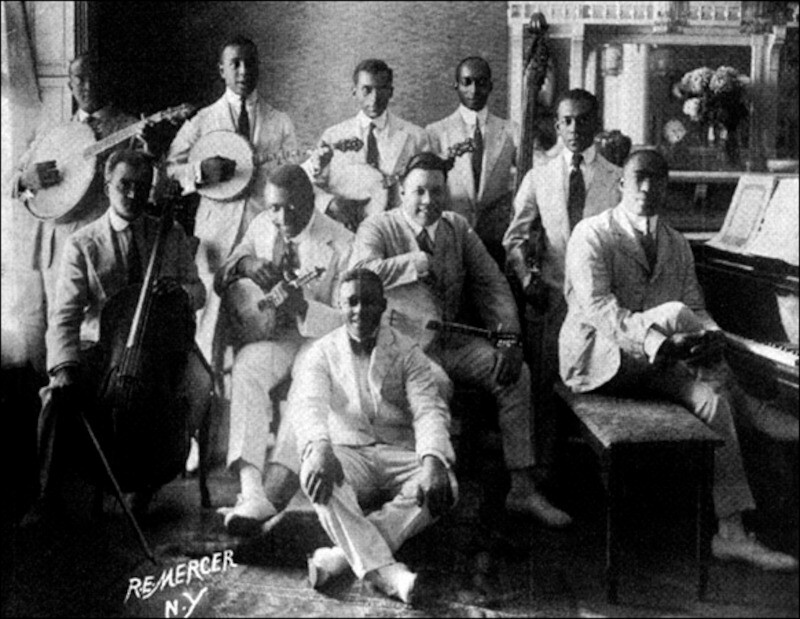
James Reese Europe was more than a bandleader. He was more than a soldier. He was more than an activist. Once labeled the “Martin Luther King of American music” by his friend and fellow musician, Eubie Blake, James Reese Europe was indeed an embodiment of a larger American tradition, often assimilating the disparate and diverse elements around him. His 37-year life, therefore, demands our attention and respect.
James Reese Europe, born in Mobile, Alabama as the second youngest of five children, developed musical ability early, learning piano from his mother, and banjo and fiddle under his father’s encouragement. When the family moved to Washington, D.C., they lived just ten doors down from John Phillip Sousa, the most celebrated band leader in the country.
After the death of Europe’s father, his older brother John moved to New York, whom he quickly followed. Switching his primary instrument from violin to piano, Europe began to find work in the “Tenderloin” district of Manhattan, home to many clubs, as well as the song publishers of Tin Pan Alley. By the fall of 1904, he had sold five of his compositions to music publisher Sol Bloom, and began to make a name for himself by performing at social events of the economic elite.
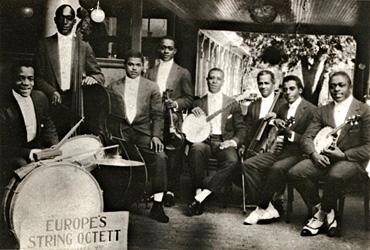
As Europe established himself as a musician, he found opportunity in the theater, the most prominent industry for black musicians at the time. Over the next six years, Europe successfully served as the musical director for several black Broadway revues: A Trip to Africa, The Shoo-Fly Regiment, The Black Politician, and The Red Moon, contributing music along the way. During this time, Europe worked with Broadway stars, such as Ernest Hogan, as well as other musicians, ten of whom organized themselves into a club to serve as “representative members of the Negro theatrical profession.” They called themselves “The Frogs.”
As large Broadway productions began to dwindle for black performers, Europe helped organize a new group, The Clef Club, dedicated to combining musical technique with “good fellowship and social intercourse” for black musicians. The Clef Club had hundreds of members across New York City functioning similarly to both a union and booking agency, providing musicians for events at better pay than they might achieve on their own. The Clef Club organized a 125-member orchestra for several successful concerts at Carnegie Hall under Europe’s direction. Europe’s next creation, however, was not entirely his own.
The Clef Club continued to perform at high society venues, with many featuring elaborate dancing. In 1913, James Reese Europe met Vernon and Irene Castle, a married couple whose theater careers led them to become prominent dancers and contribute to the new fad of dancing among young people. Upon hearing one of Europe’s bands, the Castles hired them on the spot as their personal musical accompaniment.
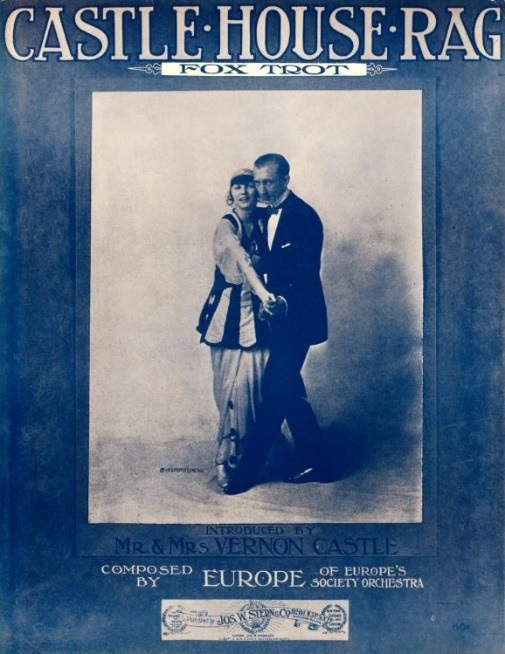
Europe’s band toured with the Castles for two years. During breaks on tour, Europe would sit at the piano and slowly play a W.C. Handy composition, “The Memphis Blues.” When the Castles became fascinated with its rhythm, Europe suggested they coordinate a slow dance to it; the dance they developed was later known as the foxtrot. Europe’s band with the Castles was so popular, they released their music on Victor Records, making them the first black orchestra ever recorded. Their songs included an original piece, “Castle House Rag,” which helped popularize the foxtrot. Any future collaboration, notably a tour of England and France, was cut short when the first World War broke out.
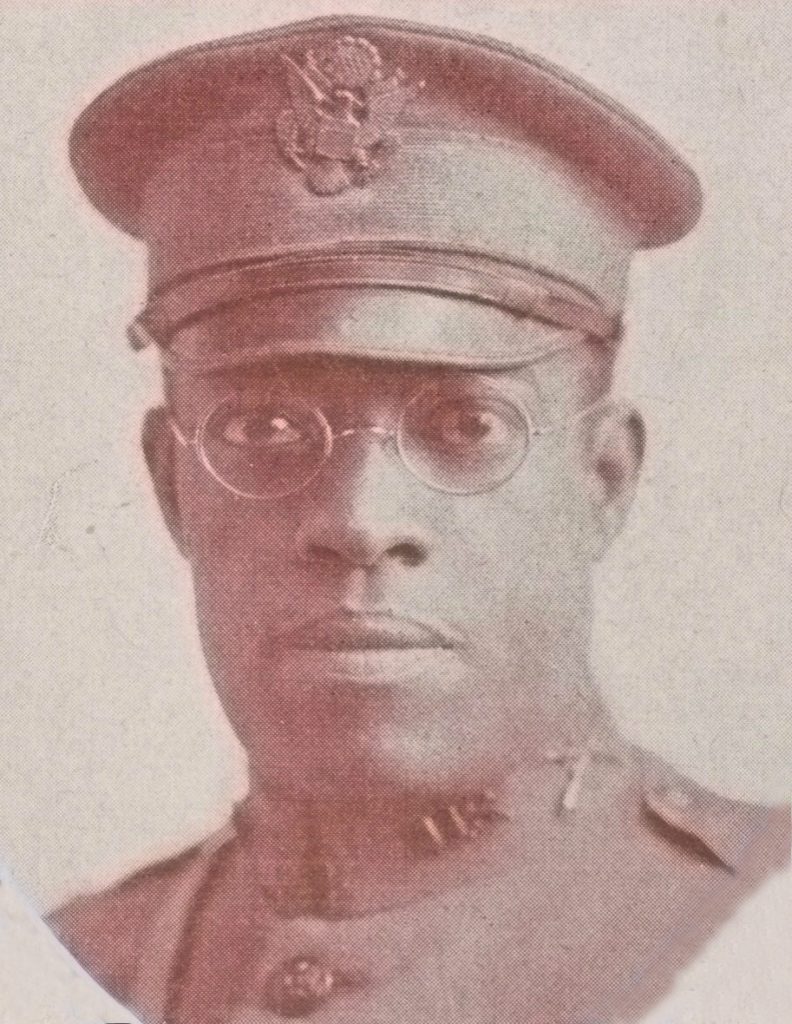
Upon hearing the news, Europe quickly enlisted in the 15th New York Infantry Regiment, a black National Guard unit authorized in Harlem in 1913 and organized in 1916. He hoped that by doing so, he could cultivate good will for African Americans. “There has never been such an organization of Negro men that will bring together all classes,” Europe explained. “Our race will never amount to anything…unless there are strong organizations of men who stand…for the development of the Negro manhood of Harlem.”
Europe had good reason for his wartime motivation. After the US entered the war in 1917, the unit was sent to train at Camp Wadsworth in South Carolina, where they were not welcomed by the locals. When Europe and fellow infantryman, Noble Sissle, attempted to buy a newspaper from a hotel shop, they were refused service. Tensions rose as officers of the 27th division, a white New York National Guard unit threatened to boycott and burn down stores who refused to serve black officers. The men of Europe’s unit were willing to peacefully abide by Jim Crow segregation, as ordered by commanding officer, Col. William Hayward, but the 27th would not stand for it. When the 27th division intervened, Europe attempted to dissuade them, but to no avail. In order to keep the peace, Europe’s unit was sent to France to finish their training.
Europe’s unit, newly reconstituted as the 369th Regiment, arrived in France on December 27th, 1917. After just three weeks of French training, the 369th infantry joined the trenches, and stayed for 191 consecutive days, more than any other American unit. On the night of April 20, Lieutenant James Reese Europe accompanied a patrol across no-man’s land through heavy artillery, making him the first African American officer to see combat during the war. In August, Europe and his band were pulled from the front, owing to their musical importance for troop morale.
The band, which regularly played at army camps and French villages, had its biggest opportunity when it performed for 50,000 people with the Grenadier Guard’s band, the Garde Républicaine’s Band, and the Royal Italian Band. One of the groups, convinced that Europe’s men were using trick instruments, asked to examine them; the impressive sounds made by ordinary horns were not possible, they argued. Europe addressed the concern by attending their rehearsal and providing a demonstration of his band’s syncopated rhythm, what he called its “racial musical characteristic,” which continued to captivate audiences until the war’s end.
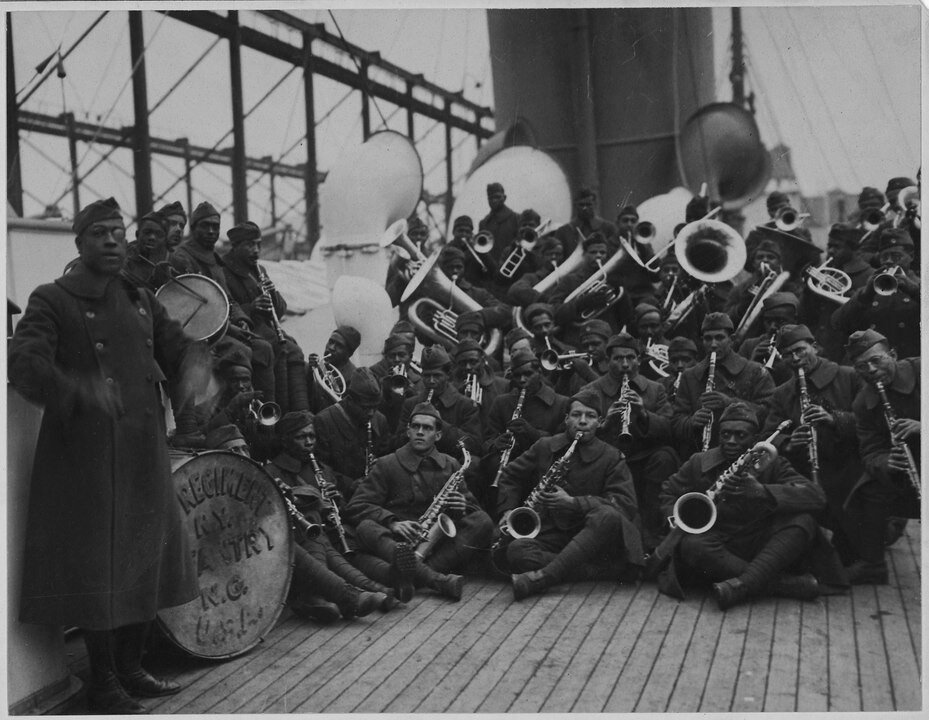
When Lieutenant James Reese Europe came home a war hero in February 1919, his unit was cheered unanimously by thousands in a victory parade from 5th Avenue to Harlem. 171 men of the 369th infantry regiment were decorated for bravery, the most of any other American unit. They received the Croix de Guerre, were chosen to lead allied forces to the Rhine, and became known as the “Hellfighters.” Europe’s military band was so popular, they went on a successful tour of the country and released 24 records in the following months. Europe though, had even bigger plans for his career: work for the National Negro Symphony Orchestra he established in 1914, another Broadway musical, and new jazz inspired compositions. None of them would come to fruition.
Three months after returning home from war and as his band’s tour was nearing its end, Europe and his men arrived in Boston to play a three-day engagement at Mechanics Hall. On May 9, 1919, Europe, who was sick and told to be careful of developing pneumonia, was feeling better by the evening performance. During the first half of the concert, one of Europe’s two drummers, Herbert Wright, complained backstage about being blamed for the other drummer’s mistakes. At the concert’s intermission, he followed Europe into his dressing room.
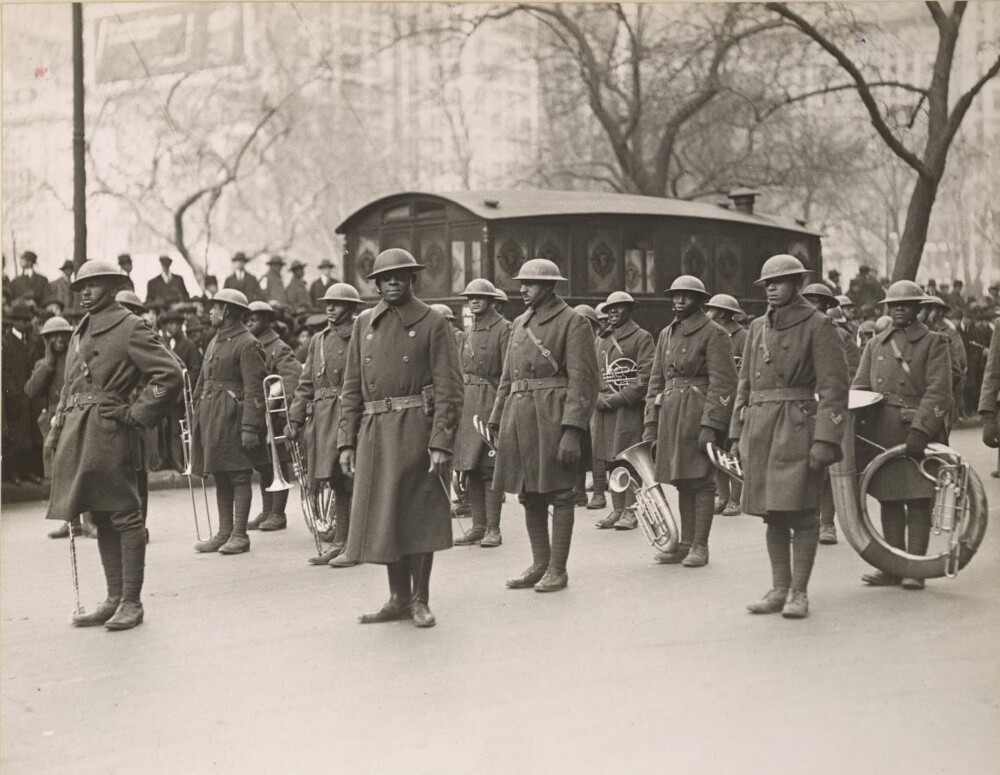
After accusing Europe of being treated unfairly, he screamed at the bandleader and proceeded to stab him in the neck with a knife. Before leaving for the hospital, Europe told his band to finish the concert, and to meet him for a ceremony they were scheduled to play at the next morning. Europe’s band had been asked by Governor Calvin Coolidge to perform on the steps of the State House on May 10. Coolidge also asked Europe to lay a wreath at the Robert Gould Shaw Memorial, a monument celebrating the 54th Massachusetts Volunteers, the first black regiment to fight in the Civil War. James Reese Europe, however, would not live through the night; he was pronounced dead at 11:45 that evening.
Europe’s contributions to music were not lost on The New York Times. It described the incalculable loss of “one of the greatest ragtime conductors, perhaps the greatest” by mentioning how, “ragtime may be negro music, but it is American negro music, more alive than much other American music; and Europe was one of the Americans who was contributing most to its development.”
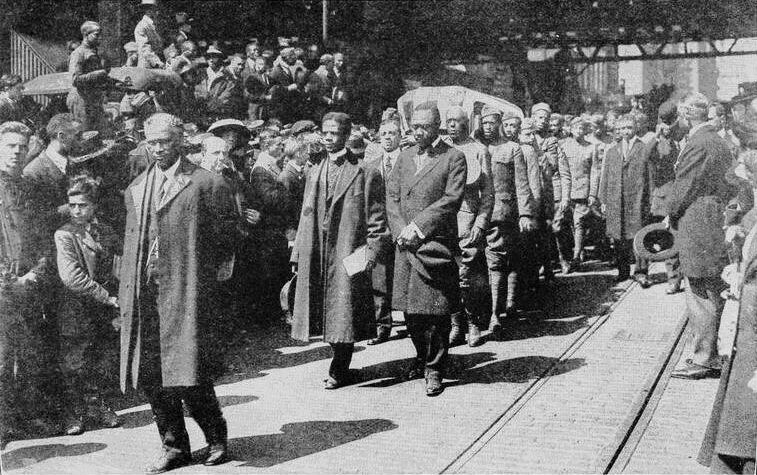
At Europe’s official funeral, the first ever granted to a black citizen by the city of New York, the procession that proceeded down the west side of Manhattan, from Harlem to St. Mark’s Episcopal Church, attracted thousands of black and white mourners to lament the great loss of their community leader. A mourner mentioned to The New York Tribune how Europe was the “living ‘open sesame’ to the colored…He took them from their porter’s places and raised them to positions of importance as real musicians.”
His friend and frequent collaborator, Noble Sissle, remembered him even more intimately, “as benefactor, comrade, pal,” and “just plain ‘Jim,’” he recalled. “There was only one Jim Europe,” and the world knew it.
Sources:
“A Negro Explains Jazz.” Literary Digest, (1919): 28-29.
“369th Infantry Regiment.” New York State Military Museum and Veterans Research Center. Accessed April 5, 2023. https://tinyurl.com/369thregiment
Badger, R. Reid. A Life in Ragtime: A Biography of James Reese Europe. New York: Oxford University Press, 1995.
New York Public Library Photography, Digital Collections.
Sissle, Noble L. Memoirs of Lieutenant “Jim” Europe. Library of Congress Manuscript Division. https://tinyurl.com/jimeurope.
Ward, Geoffrey C. and Ken Burns. Jazz: A History of America’s Music. New York: Alfred A. Knopf, 2000.
Jack Seufert lives in Parkton, MD.
Jack Seufert lives in Parkton, MD.






















